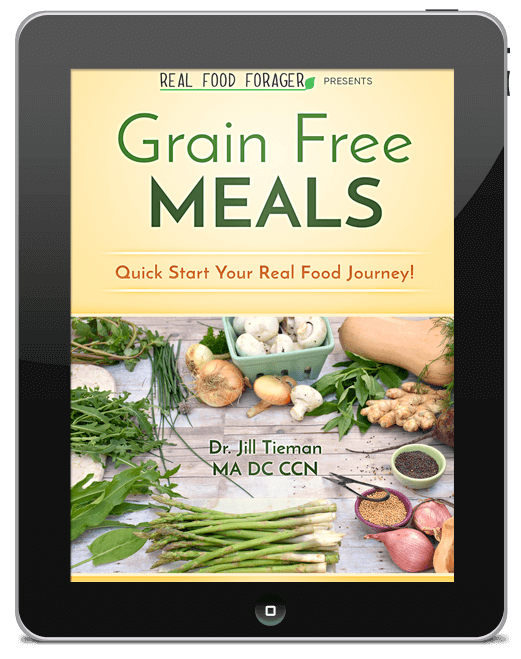
It’s a bummer when you have an injury, illness or surgery during the hot months of summer. Here are some real foods that are critical for healing from injury or illness.
The human body has an amazing ability to heal itself and these foods will provide nutrients and nourishment that support the process.
Just think about it.
If you are nutrient deficient, how will the body be able to repair injured tissues or support the immune system during an illness?
It won’t.
If the nutrients are not available, the body will pull those necessary nutrients out of the tissues and bones and over time the body will become depleted.
You have to provide your body with nutrient dense food in order to recovery quickly and well.
It starts with food.
Food is the best medicine, because food contains all the necessary nutrients. In a whole food, the nutrients are surrounded by co-factors and enzymes that will help to absorb and assimilate all the molecules.
The correct healing foods contain properties that are anti-inflammatory, anti-microbial, help to balance hormones, help in the digestion of food and provide the nutrients in a form that is easy to absorb and utilize.
If you are already on a real foods diet, your recovery from an illness, wound or surgery will be faster than someone who is eating the poor standard American diet.
However, when an unexpected injury or illness occurs your body needs higher levels of nutrient dense foods in order to improve recuperation in the best possible way.
If you know you have to have a surgery, you can prepare your body ahead of time for a better recovery.
Soup made from bone broth contains all the basic tools your body needs to repair itself.
Traditional cultures the world over have included bone broth in their daily diets. Perhaps your grandmother knew that,
good broth will resurrect the dead (a South American proverb).
I remember my mother making chicken soup with a freshly slaughtered chicken from the local butcher with all the organs and the feet. The feet are essential for a broth that will have a lot of collagen and gelatin.
Homemade broth is full of the amino acids necessary for collagen production. These are proline, glycine and hydroxyproline.
Collagen is the single most abundant protein in the animal kingdom. It is critical for your body to have the building blocks of collagen for wound healing or illness recovery.
Collagen is made up of proline, glycine and hydroxyproline. These amino acids are abundant in the cartilage, bone and the skin of animals and fish.
In order for the body to make collagen from these basic building blocks, the amino acids have to be hydroxylated – simply put, water is added.
All of these processes require vitamin C as an enzyme cofactor. That is why the disease scurvy – a deficiency of vitamin C will affect all collagen tissue whether it is in the skin, bones, joints or gums.
The wrinkled skin of people who are long time smokers reflects the deficiency of vitamin C and it’s effect on collagen – as smoking breaks vitamin C down.
See below for m ore on vitamin C.
Gelatin is derived from collagen.
It is the protein portion of collagen. Commercially it is used for a variety of ways in the food, pharmaceutical and even the paper industry. Gelatin may be obtained as a processed food item for use in home cooking.
The most obvious place to get collagen and gelatin – so necessary for human bone, joint and membrane health – is from the bones, joint and skin tissue of animals.
Learning how to make homemade stock is critical for good health. It can be included at least once a day as a small bowl or cup of broth or it can be made in to a more complex soup or gravy.
Once you get over the learning curve it is simple.
Eat soup or broth at every meal while you are recuperating. It will provide easily assimilated nutrients and will help digest the rest of the meal too.
Check out my ebook, Beyond Broth Nourishing Homemade Paleo Soups for some great soups ideas!
Eggs have been highly prized in all traditional cultures. The yolks carry most of the nutrition – the fat soluble vitamins A, D, E and K2 as well as choline, which is a nutrient absolutely essential for the brain.
At biodynamic farms, the chickens are moved to new pasture each day and they follow the cows and peck through the cow pies for insects.
It is a self-sustaining operation and the animals are healthy, are treated humanely and with dignity.
These pasture raised chickens produce eggs that are full of vitamin D because the chickens are given the opportunity to be in the sun. The vitamin A, E and K come from the grass and insects that they eat.
Eggs are easy to digest, can be stirred into broth or cooked anyway you like them. The fat soluble vitamins are critical for wound healing and illness recovery and may be eaten every day.
The cholesterol in the eggs is also a very important healing molecule. It is a basic building block for the cell membrane, a basic building block for hormones production and a basic substance for communication between neurons in the brain and peripheral nervous system.
Eat eggs.
Read more about the benefits of cholesterol here.
Small fatty fish, both fresh and dried, such as, anchovies, sardines and whitebait, are eaten whole, with the bones, the heads and organs that provide so much nutrition. Today these small fish are found canned in olive oil and may be spread on crackers or tossed into salads.
They provide important omega 3 fatty acids that help keep inflammation down.
The natives of the Andes went to great lengths to carry dried fish roe from sea level back to their villages high in the mountains – sometimes hundreds of miles – in order to supply those of childbearing age with this super food.
These nutrient dense fish eggs are rich in vitamins A, D, and K2 (Activator X) as well as zinc, iodine, and the fatty acid DHA (important for brain and eye development) – all nutrients that are critical for wound healing and illness recovery.
You may be able to order fish roe from your local fish store. On the east coast, shad roe may be obtained in the spring. There is a nice recipe for shad roe cakes in Nourishing Traditions.
In many cultures, organ meats were the first to be eaten, as they are the epitome of the expression nutrient dense. Liver from poultry, fish, cow, lamb, game and pig is recognized the world over as a superfood.
Liver is rich in iron and other minerals, choline, and B vitamins – especially B6 and B12. The liver from ruminant animals (cow, lamb and game) is the best food source of vitamin A. Pig liver is loaded with vitamin D. Liver from poultry contains about half the vitamin A as beef or lamb liver, but has a nice balance of vitamins A, D and K2.
Hate the taste of liver?
Try soaking it in lemon juice for a few hours before cooking. This really helps to remove that yuck factor.
Hate the texture?
Process it into a pate with onions, mushrooms and bacon and you will be in heaven.
Liver will help with anemia and is rich in zinc which is essential for wound healing and illness recovery.
If you really cannot handle organ meats, you can try desiccated liver capsules. But you must buy them from a reputable company.
Traditional people of all cultures ate bone marrow. Bone marrow contains the precursor building blocks of blood cells, so important in wound healing and illness recovery.
This food contains the important fat soluble mineral activators.
Bone marrow is rich in sphingolipids, which are essential fats that protect cell membranes. These fats are critical components of the brain and nervous system.
An easy way to incorporate marrow into a meal is to simply infuse the marrow from within the bone right into a slow cooked bone broth, sauce or stew. Marrow bones can also be roasted or boiled and the marrow can be fished out and eaten with a little sea salt, on crackers, or plain.
Misunderstood and maligned for the last few decades, butter is probably one of the healthiest fats you can eat. As studied and documented by Dr. Weston Price, many traditional cultures held butter up to be a sacred food.
Isolated Swiss villagers placed a bowl of butter on their church altars, set a wick in it, and let it burn throughout the year as a sign of divinity in the butter.
Butter made from the milk of properly raised grass fed cows is indeed sacred. It is full of important fat soluble vitamins A, D, E and K2.
Traditional cultures put butter on their vegetables because they knew that the vitamins and minerals in vegetables need the activators in fat to be absorbed properly by the human body.
I’ll repeat that.
Vitamins and minerals need fat in order to be absorbed properly. That is why it is important to use a salad dressing with a good fat on top of vegetables and salad.
Many people that cannot tolerate diary, are fine with ghee.
When you are recovering from an injury or an illness, be sure to eat plenty of butter or ghee!
Jello can easily be made at home with organic juices – like this organic pomegranite juice – using a good quality gelatin from grassfed cows. I usually use 2 cups of juice and 2 cups of hot water – mix the two, add some sweetener like honey and/or stevia and sprinkle in 4 tablespoons of gelatin with a whisk into a 9 x 13 pan. Refrigerate for at least one hour, cut into squares and store in the refrigerator.
It is a refreshing treat, easy on the gut and great for healing.
Likewise, this recipe for homemade Coconut Milk Gummy Candy will show you how to make delicious gummy candy that is also great for healing!
I get high quality collagen and gelatin here.
Do you have any favorite real foods that you eat when you are ill or injured? Please share them in the comments.

Inspire Your Real Food Healing Journey with my FREE Grain-Free Meals e-Cookbook and Getting Started email series and newsletter! Unsubscribe anytime. Privacy Policy